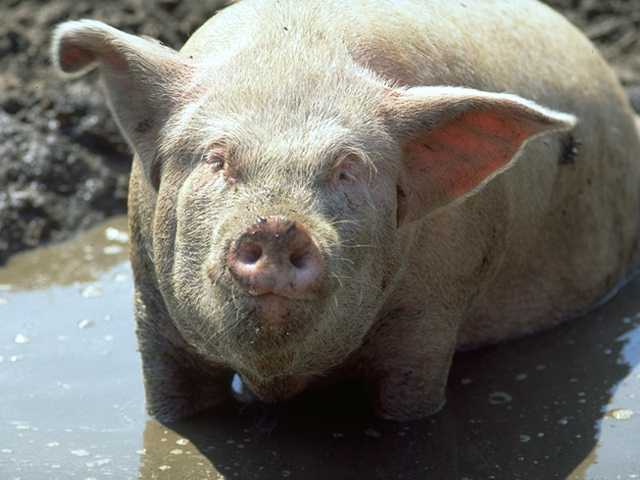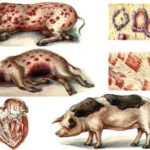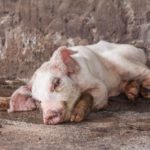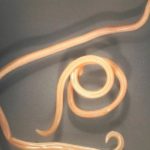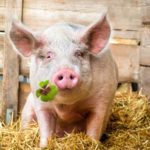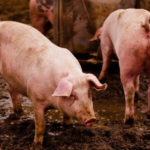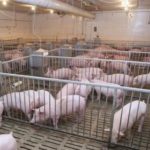Ever since people began breeding pigs, these animals have been afflicted by an insidious disease called dysentery. This disease still poses a serious economic threat to many countries around the world. Dysentery that affects pigs is dangerous not only for them, but also for other animals living on the farm, in particular for cattle. What signs can be used to track dysentery and is it possible to cure domestic pigs from this disease?
Danger of disease for pigs
Experts have not yet thoroughly studied the mechanism of dysentery in pigs.Often the disease occurs in young individuals due to disruption of the gastrointestinal tract. As a result, the bactericidal effect of gastric juice in the animal’s stomach is reduced and secretory function is disrupted. The intestinal microflora takes on the character of a pathogenic pathogen and penetrates the mucous membrane.
Gradually, the mucous membrane of the large intestine becomes inflamed and clogged, swelling and hyperemia appear. Pepsin activity decreases, hydrochloric acid gradually leaves the gastrointestinal tract. The concentration of acetic and lactic acids, on the contrary, increases, and the intestinal mucosa becomes irritated. As a result, the pig experiences diarrhea, which gradually leads to intoxication of the animal’s body and often leads to death.
Pathogen
Pigs bleat dysentery due to an anaerobic spirochete. This pathogenic bacterium affects the intestinal mucosa of the animal. The disease can spread in several ways:
- from recovered individuals;
- as a result of feeding animals with low-quality feed;
- when drinking dirty drinking water;
- as a result of the accumulation of a large number of piglets in small pens;
- in case of violation of sanitary standards of detention;
- through the manure of infected animals.
Often the disease breaks out on a farm after the acquisition of new individuals. Therefore, newly purchased animals are kept in quarantine for several weeks. During this period, it becomes clear whether the pet has dysentery or not. Most often, piglets suffer from this disease. The spirochete can be transmitted through the milk of an ill sow. Since the immunity of young individuals is not yet fully developed, dysentery in piglets most often ends in failure.
Recovered individuals are carriers of the virus for 5 months and must be isolated from other domestic animals.
Forms and symptoms of the disease
There are several forms of dysentery:
- Spicy. The pathology most often affects piglets that were weaned from their mother a few weeks ago. A sick animal usually dies 4-5 days after the onset of the disease.
- Subacute. This form is characterized by erased symptoms and stunted growth. Young animals most often suffer from subacute dysentery in the first month of supplementary feeding.
- Chronic. Periods of remission alternate with exacerbations.
The main symptom of dysentery is profuse diarrhea. At the very beginning of the disease, the piglet “walks a lot” with water. Little by little, the discharge becomes mucous and streaks of blood appear in it. Next, the feces become coffee-brown in color, and just before the pig dies, it turns black.
In addition to diarrhea, the animal may exhibit the following signs:
- temperature increase (short-term) up to 41 C°;
- rapid and shallow breathing;
- blurred eyes;
- exhaustion.
Diagnostic methods
Dysentery is diagnosed based on a number of studies: bacteriological, histological, pathological, and microscopy. In bacteriological studies, the contents of the large intestine and mucous membrane are studied. The diagnosis is considered established if a high concentration of anaerobic spirochete is detected in the smear. Dysentery must be differentiated from salmonellosis, feed toxicosis, plague and anaerobic enterotoxemia.
How to cure a pig from dysentery
A farm where pigs have contracted dysentery should be subject to restrictions. Many countries prohibit the export of sick individuals outside the farm. They are also not used in divorce. Sick animals are immediately separated from healthy ones.The same applies to pigs that have been in contact with sick relatives.
Dysentery is treated with the following drugs:
- Trichopolum;
- Nifulin;
- Osarsol;
- Vetdipasfen.
- Tilan;
A popular drug for the treatment of swine dysentery is Osarsol. The product is introduced into complementary food for pigs or diluted in a soda solution in a ratio of 10 g of soda per 100 ml of water. The exact dosage depends on the age of the animals. This treatment continues twice a day for three days. In this case, the pigs cannot be fed, but they can be given water without restrictions. Therapy continues until complete recovery.
Important! The meat of an animal that has died of dysentery should not be eaten. It is advisable to burn the carcasses. Individuals who have recovered from the disease are sent to slaughter to reduce the risk of infection to other animals. After cutting, the meat of such animals requires special heat treatment.
Prevention
Preventing swine dysentery is easier than treating it. To prevent the farm from being affected by an epidemic of this disease, you must adhere to the following mandatory rules:
- every 3 months give animals Tilan and Osarsol for preventive purposes;
- feed animals with high quality feed;
- every month the pen where the pigs live is whitewashed with lime;
- adhere to sanitary standards for keeping animals: monitor the temperature and humidity in the barn, clean the pens every three days;
- take care of the quality of drinking water;
- Newly purchased animals should be kept separately from the rest for 3 weeks.


